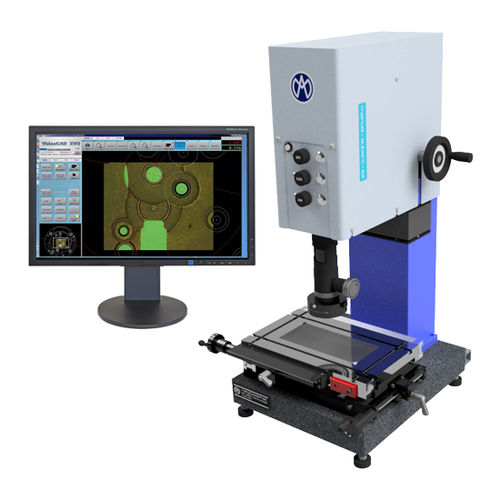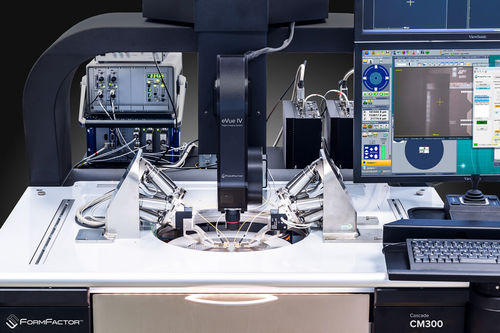Answers to common questions about optical measurement system adoption
Wiki Article
The Role of Optical Measurement Systems in Advancing Assessment Methods
Optical dimension systems have actually changed width, bringing a degree of accuracy that was when unthinkable. You could be surprised to learn exactly how these innovations, based on fundamental principles like reflection and disturbance, are used throughout numerous sectors. Their non-contact capabilities not just boost precision but also streamline procedures. As you discover additionally, you'll discover exactly how these systems are shaping the future of measurement and quality control.The Advancement of Assessment: A Historical Point Of View
As you explore the background of assessment, you'll find that its advancement shows mankind's mission for precision and standardization. From ancient civilizations making use of body parts as devices of measurement to the growth of standardized weights and actions, each step reveals our desire for precision. The Egyptians built the pyramids utilizing precise dimensions, while the Romans advanced engineering with their innovative measuring tools.Throughout the Renaissance, scientific developments shifted the emphasis towards more empirical approaches, leading the way for modern assessment. The intro of the metric system in the late 18th century marked a substantial milestone, developing global standards. Throughout the 20th century, technological innovations even more changed metrology, making it possible for highly accurate measurements in different areas.
Today, metrology remains to develop, incorporating digital modern technology and automation. This history highlights not just the relevance of measurement however also our ruthless quest of boosting precision and consistency in our progressively intricate world.
Principles of Optical Measurement Systems
Comprehending the principles behind optical dimension systems is crucial for accurate results in assessment. You'll desire to take into consideration basic optical concepts, dimension precision elements, and efficient system calibration methods. Each of these aspects plays an essential function in ensuring your measurements are reliable and precise.Fundamental Optical Principles
While checking out optical dimension systems, you'll experience fundamental optical principles that create the backbone of exact data purchase. Light acts in predictable means, and comprehending these actions-- like reflection, diffraction, and refraction-- is necessary for effective dimensions. By grasping these concepts, you'll be outfitted to leverage optical innovations properly, leading the method for innovations in metrology and ensuring your measurements are both reputable and repeatable.Dimension Precision Elements
To achieve high measurement precision in optical systems, numerous aspects come right into play, influencing the integrity of your outcomes. Top notch lenses and detectors decrease aberrations and noise, guaranteeing your measurements are accurate. By dealing with these factors, you can boost the total efficiency of your optical dimension systems, leading to more exact and trustworthy outcomes in your assessment applications.System Calibration Strategies
Accomplishing high measurement accuracy is only component of the formula; correct system calibration methods are similarly crucial in optical measurement systems. Next, utilize known dimensions to confirm the system's outcome and make needed modifications. With these methods, you'll improve the reliability of your optical measurement system.
Trick Technologies Behind Optical Dimension
Optical measurement systems count on several vital modern technologies that improve accuracy and efficiency in width. One crucial modern technology is interferometry, which makes use of the disturbance of light waves to determine small variations and surface area irregularities with severe precision. You'll also locate laser scanning systems, which capture thorough 3D information of objects promptly, making them very useful for dimensional analysis.Additionally, CCD and CMOS sensing units play a considerable role in transforming light into electric signals, allowing for high-resolution imaging and specific measurements. Advanced formulas for picture processing further improve dimension accuracy by examining data in actual time, removing sound and enhancing attributes.
Finally, optical fiber offer adaptability and the ability to determine in difficult atmospheres while maintaining signal stability. By leveraging these technologies, you can attain exceptional lead to your metrology tasks, making certain that your measurements are both exact and dependable.
Applications of Optical Dimension in Sector
As industries progressively require precision and efficiency, the applications of optical dimension systems have actually become crucial throughout numerous industries. In production, these systems aid you monitor dimensions and tolerances in real-time, making certain quality assurance without time-consuming hands-on checks. In the vehicle sector, optical dimensions assist in aligning elements with precision, improving safety and security and efficiency.In electronic devices, you're making use of optical methods to examine minute functions on circuit card, finding defects that could result in failures. The aerospace industry benefits from non-destructive testing techniques, allowing you to evaluate materials and parts without endangering their integrity.
Optical measurement also plays an important duty in textiles, making sure textile measurements satisfy precise specs. optical measurement. With their capacity to give high-resolution information swiftly, these systems equip you to make educated choices, enhance processes, and eventually drive development across your sector
Enhancing Precision and Effectiveness in Measurements
When you think of boosting accuracy in measurements, accuracy in your dimension methods is vital. By improving these processes, you can attain quicker results without sacrificing quality. Allow's check out how taking on sophisticated optical measurement systems can boost both accuracy and efficiency in your job.Precision in Dimension Methods
Accuracy in dimension techniques is vital for accomplishing trusted results in metrology, especially because little inconsistencies can lead to considerable mistakes. By using advanced optical dimension systems, you can improve the accuracy of your dimensions. In enhancement, specific measurements allow you to preserve high quality control, making sure that products meet stringent specifications.Improving Measurement Processes
To enhance precision and performance in dimensions, enhancing your dimension processes is necessary. Begin by embracing optical measurement systems that offer real-time data, reducing the moment invested in hands-on recording. These systems typically integrate perfectly with existing software, permitting you to automate information collection and analysis.Next, systematize your measurement protocols. By implementing regular procedures, you minimize irregularity and enhance repeatability. Don't neglect to regularly adjust your devices to guarantee its accuracy.

The Effect of Optical Dimension on R & D
As scientists undertaking to press the boundaries of advancement, optical dimension systems have ended up being crucial tools in the development process. These systems give you with precise, real-time data that improves your capability to assess intricate materials and structures. In different fields, from biotechnology to aerospace, you rely upon optical dimensions to improve and optimize designs product performance.
With high-resolution imaging and non-contact methods, you can reduce sample disturbance, permitting more accurate results. This ability to capture minute details accelerates your R&D cycle, letting you iterate designs quickly and efficiently. Additionally, optical measurement fosters collaboration across techniques, as the information created is usually conveniently interpretable and shareable.
Eventually, integrating optical dimension systems into your research study not just boosts performance but additionally strengthens your understanding of the phenomena you study. By leveraging these sophisticated techniques, you're better equipped to introduce and remain ahead in an affordable landscape.
Future Fads in Optical Measurement Systems
With the quick innovation of innovation, you're likely to see considerable shifts in optical dimension systems that will certainly redefine their application across various sectors. You'll discover an approach enhanced automation and assimilation of man-made intelligence, enabling real-time data evaluation and enhanced precision. Miniaturization is another fad; small tools will make it possible for measurements in tighter rooms, making them suitable for fields like aerospace and biomedical applications.In addition, the introduction of advanced materials, such as photonic crystals, will certainly improve level of sensitivity and resolution. Expect to see systems that can operate in tough environments, giving reputable dimensions in extreme conditions. Cloud-based analytics will certainly also play a crucial duty, providing you accessibility to huge datasets for better decision-making. As these modern technologies converge, you'll find that optical dimension systems not just enhance accuracy yet additionally enhance operations, eventually driving advancement and efficiency in your jobs.
Often Asked Inquiries
Just How Do Optical Dimension Equipments Contrast to Traditional Measurement Techniques?
Optical measurement systems offer higher precision and faster results compared to traditional techniques. You'll find they capture more data factors properly, lowering human mistake and increasing reliability, making them a preferred selection in numerous applications.What Industries Advantage The Majority Of From Optical Dimension Solutions?
You'll discover industries like aerospace, automotive, and electronic devices profit most from optical dimension systems. These industries depend on precise dimensions to assure high quality and performance, enhancing performance and lowering expenses with advanced modern technology.
Are Optical Dimension Systems Expensive to Execute?
Optical dimension systems can be costly to implement, yet their precision and performance typically warrant the this website expense. Spending in such innovation can bring about considerable lasting savings and renovations in quality across different applications.What Abilities Are Required to Operate Optical Measurement Equipments?
To operate optical measurement systems, you'll require strong analytical abilities, focus to detail, and efficiency in software program tools. Experience with optics and an understanding of dimension principles will likewise boost your effectiveness and effectiveness.Just How Do Ecological Factors Impact Optical Measurements?
Ecological variables like temperature, humidity, and air quality can distort optical measurements. You'll observe variants in precision as a result of light disturbance or refraction. optical measurement systems. Maintaining stable conditions is vital for precise and dependable optical measurement results
Final thought
In recap, optical measurement systems are reinventing assessment by providing unrivaled precision and efficiency. By harnessing sophisticated concepts and innovations, these systems improve accuracy while lessening interruptions in different industries. As you explore future fads, you'll see just how the assimilation of AI and automation will certainly remain to elevate measurement techniques, driving technology and enhancing quality assurance. Accepting these developments will be vital for remaining affordable and accomplishing excellence in your area.Accomplishing high dimension precision is only component of the equation; appropriate system calibration techniques are just as important in optical measurement systems.When you believe about improving accuracy in dimensions, precision in your measurement strategies is necessary. By utilizing innovative optical measurement systems, you can improve the precision of your measurements.To boost accuracy and performance in measurements, enhancing your measurement processes is crucial. Exactly How Do Optical Dimension Systems Contrast to Typical Dimension Techniques?
Report this wiki page